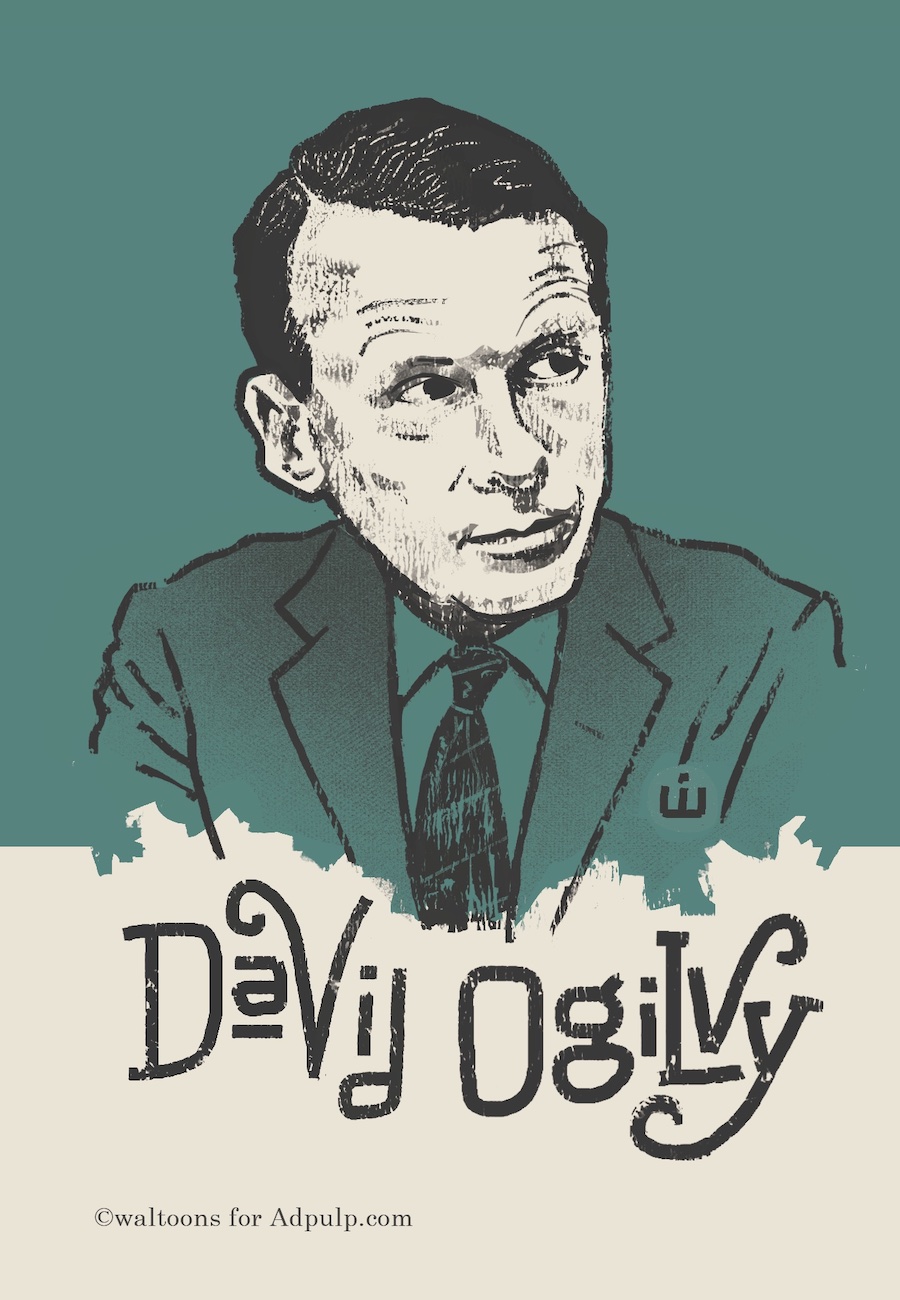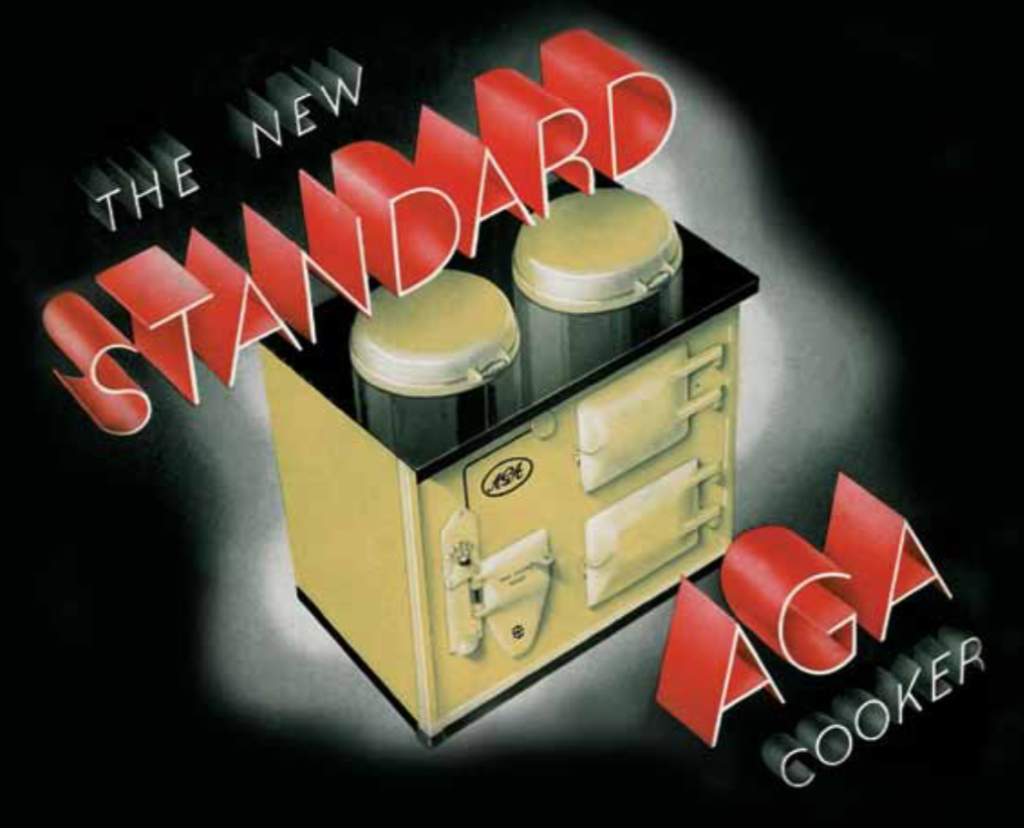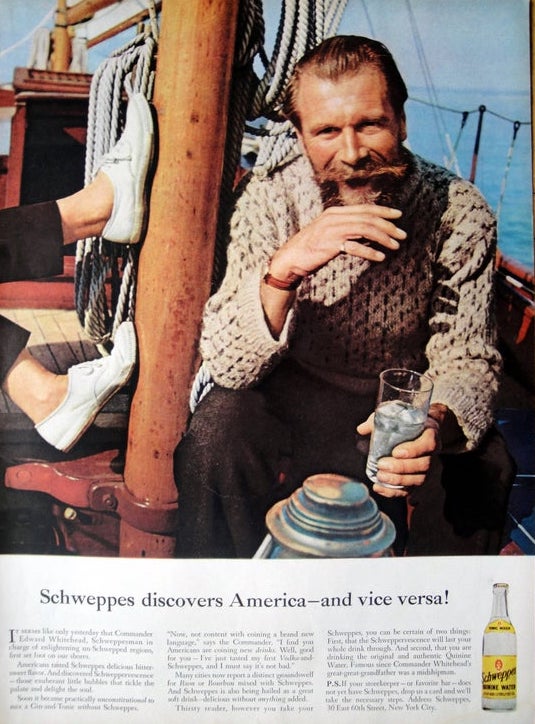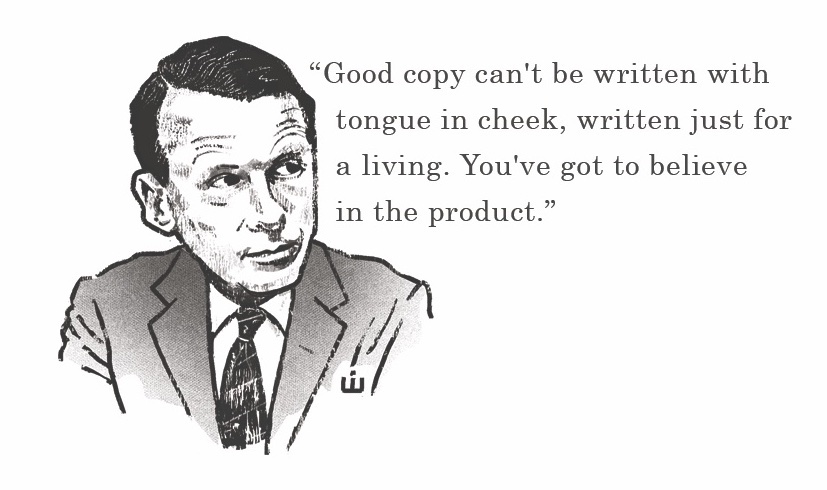David Ogilvy literally wrote the books on the advertising industry. He wrote the bestselling Confessions of an Advertising Man, and then followed it up with Ogilvy on Advertising. Both books continue to be widely read by students and practitioners today and are considered classics.
He was a proper Brit, and a restless student who left Oxford University after two years. Ogilvy lived an interesting and full life before he became a copywriter and made it big in the Big Apple, eventually retiring—as ad legends do—to a 12th-century castle in France.
Before he became a copywriter, Ogilvy worked in the kitchen of an elite Paris restaurant, an experience that helped shape his ideas about elevating craft, persistent hard work, and no-nonsense management. He was also a door-to-door salesman and for three years, a farmer in Lancaster, Pennsylvania.

He Learned to Sell By Knocking Lots of Doors
Ogilvy’s early work selling Aga Ovens door-to-door played a key role in shaping his later work. Ogilvy wrote a manual for the company, “The Theory and Practice of Selling the Aga Cooker,” which not only helped the company sell many more ovens, it landed David Ogilvy a job as a copywriter at Mather and Crowther in London.
“The good salesman combines the tenacity of a bulldog with the manner of a spaniel. If you have any charm, ooze it,” he advised in the sales manual.

Ogilvy said of his time on the Aga business, “I learned to sell, which means listening more than you talk, knowing your product inside and out, having a sense of humor, and telling the truth.”
These principles played out in Ogilvy’s later work for clients. He was an adherent of the “reason why” school of advertising and close friends with its primary proponent, Rosser Reeves. Ogilvy was also more expansive than that. He took what he could learn from the sales side of things and also what he could learn from people like Raymond Rubicam and Bill Bernbach, who practiced the more subtle art of brand building fueled by image advertising.
Dove Creams Your Skin While You Wash
In this work for Dove soap, we can see the direct influence of Rosser Reeves. In fact, the spot could have been made by Reeves. The Unique Selling Proposition here is that Dove is made with cleansing cream. Ogilvy then repeats the main idea several times, as Reeves would have done.

Enter the Brand Character: The Hathaway Man

Are you familiar with the Hathaway man? Hathaway is both the man and the brand.
Ogilvy veered away from pure “reason why” hard sell advertising here. With the Hathaway man in his crisp shirt, Ogilvy began to champion the Big Idea, along with Bill Bernbach and other key players in the creative revolution. What’s the big idea here in this ad?
Big Idea: Forget what you’ve heard, the shirt does make the man. And the man with the eye patch in a Hathaway shirt is a serious man—a man to be reckoned with (like Ogilvy himself).
In this ad campaign, we have the brand as a conveyor of personal identity. It’s not just about product attributes or functionality, although they do feature prominently in this ad.
In Ogilvy’s binary conception, there were Hathaway men and lesser men. The utter arrogance in this and the subservient position of the woman in the ad shown above are hard not to miss, particularly by today’s standards. Nevertheless, the campaign is an early showcase for the power of brand positioning.
Another Memorable Brand Character: Commander Whitehead

At a time when Leo Burnett was inventing animated brand characters like the Jolly Green Giant and Charlie the Tuna, Ogilvy was busy making fictional characters from real men.
He created another famous brand character for another important client, Schweppe’s. This time it was the bearded mascot, Commander Edward Whitehead, who got people’s attention. Men with beards were not common at the time. Like the man with the eye patch in a crisp Hathaway shirt, Ogilvy successfully used another visual device to entice readers to stop and consider.
He wasn’t the first copywriter to think visually. Like Helen Lansdowne Resor before him, Ogilvy grasped the power of art direction to tell a story.
David Ogilvy’s Legacy
David Ogilvy was a modern man in many senses and a man with an active and fertile curiosity. He was the quintessential ad man.
Ogilvy famously said, “The customer is not a moron, she’s your wife.” I am pretty sure this takeaway came from his door-to-door sales experience. It’s also a great reminder to leave the ivory tower and theory behind, and listen.
David Ogilvy respected the buyer of his client’s products. He was a gentleman first and then a fierce operator who grew his small agency into an international juggernaut worth billions of today’s dollars.

It’s important to note that David Ogilvy did not reach New York or Madison Avenue until he was 38 years old. The agency he built, the best-selling books he wrote, and the piles of money he made all came in the prime of his life. People often believe that advertising is a business for young people. I believe it’s a business for people who can relate to other people, and move other people to act.
